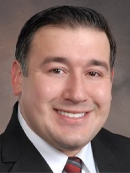Better Serving the Underserved: How Accountable Care Can Benefit Long Term Care Residents
John Dickey and Mike Camacho
4/11/2023
ADVERTORIAL
More than 1.3 million people live in long term care facilities across the U.S.—and only roughly 10 percent of those individuals currently participate in a population health program.
These individuals are among the most vulnerable in our health care system, with chronic illnesses such as heart disease, diabetes, dementia, and depression. They're people nearing the end of their lives—the mortality rate is around 27 percent each year—and as such, are more susceptible to hospitalization and complications. According to JAMA Health Forum, the average annual hospitalization rate for this population is 58 percent, and 72 percent of patients visit the emergency department (ED) each year. Increased hospitalizations, ED visits, and readmissions indicate these individuals aren't getting the care they need to help prevent these acute episodes.
Long Term Care ACOs Are a Sound Solution
Our current Medicare system tends to focus on short-term patient stays, which see a higher reimbursement rate versus long term care patients. The same is true for most accountable care organizations (ACOs), which are focused on community-based patients and shy away from long term care residents who, along with experiencing greater illness and cost, have fewer years left to live.
These individuals' quality of life is affected not because of lack of caring, but because the sheer amount of resources and support needed to provide life-sustaining care for those with complex clinical illnesses can sometimes be lacking or uncoordinated. Treating these individuals at the facility when they're experiencing a health issue isn't always possible due to limited staffing—in terms of people and hours. As such, they're often sent to the hospital—a tremendous burden on staff there as well as on the total cost of care.
At approximately $35K per long term care resident per year, the individual cost for care is roughly 3½ times greater than community-based Medicare fee-for-service beneficiaries. For comparison, the annual benchmark for community ACOs is $11,700.
Bringing these individuals into the fold of an ACO that's designed with long term care in mind can provide better quality of life while managing utilization and coordinating patient care. And it makes sense for everyone at the ACO table: patients, providers, long term care facilities, and their medical staff.
Finding the Right Focus
There's notable room for improvement in how we currently support this population. Whether you're an ACO, physician, clinician, or practitioner regularly engaging with long term care residents, we see this three-pronged approach as the best path to success.
1. Practice preventive versus reactive medicine. As is common for other patient populations, we believe employing wellness visits and chronic disease management with patients in these facilities has great potential to improve their quality of life and lighten both the demand-for-care burden in hospitals as well as the financial burden systemwide. Chronic disease management in the form of increased visits with the ACO team supporting the provider and patient can prevent exacerbation of symptoms and help address issues before they become life-threatening.
2. Use technology in treatment. Point-of-care technology is an essential way to inform and direct clinician care at the time of visits. In our post-COVID-19 era of medicine where virtual care has taken a more prominent role, we've had great success using telemedicine as a treatment-in-place intervention for patients. We see this as a huge opportunity to help fill gaps in care over nights, weekends, and holidays when physicians aren't as readily available; as a bridge to care for patients who do need to visit a hospital emergency department or be admitted; and as a reliable tuck-in service to greet and help situate new patients coming to a facility when there isn't an on-site physician available.
With telemedicine as an essential component of our own practice, we've seen:
- A 96 percent success rate for treating patients in place.
- A 39 percent return-to-facility rate—meaning the patient is treated and released from the hospital versus being admitted.
- A reduction in rates of readmission and admission by 15 to 30 percent.
3. Be transparent with your data. Tracking care by the numbers has a direct effect on patients. In collecting and assessing data from claims and operations, and from individual and group performance, it's possible to adjust course and influence behavior changes in real time to benefit a patient's experience and outcomes.
How Can We Think Differently About Long Term Care?
Individuals in long term care facilities are often in their final season of life. And while there's typically been few incentives to assist this population, we can now better support them with enhanced care designs and models. The Sound Long-Term Care Management ACO is dedicated to being the catalyst for change for this important patient population that is often left out of value-based care.


 We've found that in harnessing the right clinical knowledge and support, financial partnership, and technology, we can be successful in caring for and bringing a better quality of life to these individuals, their caregivers, and their families.
We've found that in harnessing the right clinical knowledge and support, financial partnership, and technology, we can be successful in caring for and bringing a better quality of life to these individuals, their caregivers, and their families.
Find out more about how Sound Physicians is serving long term care patients through Sound Long-Term Care Management and through its telemedicine program. Visit soundphysicians.com/sltcm-aco.

John Dickey, MD, is chief medical officer of Sound Long-Term Care Management. Mike Camacho is president of accountable care for Sound Physicians.